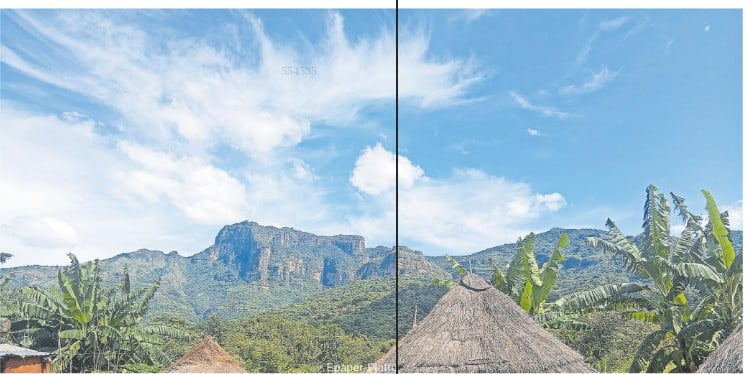Prime
New strategy to rise coffee yields targets Northern Uganda

Coffee seedlings in a nursery. Some of the ways to increase coffee production is through expanding to new areas other than the traditional coffee growing regions. PHOTO BY LOMINDA AFEDRARU
Uganda Coffee Development Authority (UCDA) has drafted, launched and is disseminating a new strategy to boost coffee production.
Known as the National Coffee Strategy (NCS), it spells out the different ways that government, UCDA, farmers’ organisations and other stakeholders will adopt to ensure a competitive, equitable, commercialised and sustainable coffee sector.
As such a number of NCS dissemination events were scheduled to take place in various coffee growing regions of the country.
High income earners
One of these was held in Mbarara on April 18 for farmers, local government leaders, representatives of farmers’ organisations, traders and other stakeholders in western and south-western Uganda.
Chris Muhango, a marketing and communications consultant, pointed out to the participants that coffee, which was a leading foreign exchange earner, is now ranked third after tourism and remittances from the diaspora.
He stressed the importance of continued effort to improve production of crops such as coffee, sweet potatoes and bananas to sustain Uganda’s position in the global production of these crops.
Other countries such as Vietnam, which took up coffee growing a few decades ago have surpassed Uganda, where Robusta coffee has grown for much longer.
Vietnam produced 22 million bags in 2013 and has substantially increased production.
It is worth noting that although Uganda is the leading exporter of coffee in Africa, its annual production has stagnated at about three million 60kg-bags for nearly 20 years despite efforts to increase production.
Ethiopia is the continent’s most important coffee producer but exports relatively less compared to production because of a high domestic consumption.
Probably, Uganda has to take most of the blame for the stark contrast with countries such as Vietnam and Ethiopia.
There has not been sufficient investment to develop the sector in terms of research and service delivery.
However, in the recent years, government has taken measures to promote production.
In 2013, a National Coffee Policy (NCP) was put in place. It was to set the basis for laws and control measures to streamline and boost production, quality, value addition, and domestic consumption.
Develop strategy
After the launch of NCP, the government mandated UCDA to formulate the NCS.
This was achieved after nationwide consultations with farmers, traders, farmer organisations, leaders and other stakeholders. The process was supported by Usaid Feed the Future Uganda’s Enabling Environment for Agriculture Activity.
With adaption of the strategy, Uganda hopes to move from an annual production of 3.6 million bags to six million bags in 2019/2020 and to 15 million bags by 2039/2040.
“This should generate exports revenues of $1.1b by 2020 and $2.5b by 2040,” said Tress Bucyanayandi, the minister of Agriculture during the Mbarara NCS dissemination workshop.
The strategy has a number of innovations.
These include strengthening the public extension system, which will see coffee farmers rejuvenating old trees through stumping and pruning.
It will advocate increased use of both inorganic and organic manure to realise higher yields with existing varieties through improved agronomic practices.
There is also an immediate research priority—development of varieties that can be planted more densely in intercropped systems.
Expansion of the area under coffee by 30 per cent by 2020. That is, a five per cent increase in the traditional coffee growing districts and 25 per cent in the other areas.
Expand to the north
Northern Uganda is earmarked for this after a feasibility study and needs assessment in the districts identified for expansion. Farmers and farmers’ organisations will receive support and training.
Since the region experiences longer dry periods, there will be use of water capture and irrigation technologies as well as shade trees, drought resistant coffee varieties, and dealing with anticipated effects of climate change.
Through extension, advice and demonstration to farmers of best agronomic practices—water management, spacing, pruning and intercropping, mulching, shade trees, improved seeds, pesticides and herbicides.
A five-year plan will be set up for development, multiplication, procurement and distribution of adequate quantities of planting material.
It will improve access to agro-inputs besides training farmers in their safe use, and address the issue of counterfeit agro-inputs.
It has a component for monitoring diseases and pests such as Coffee Wilt Disease, Black Coffee Twig Borer, Leaf Rust and Coffee Berry Disease. There will be weather forecast information systems for farmers.
NCS has a lot more to boost coffee production, which could be summed in the words of Bucyanayandi: “The strategy document ... clearly highlights what needs to be done at every level to enable the country exploit the potential and consequently improve the livelihood of the participating communities.”




